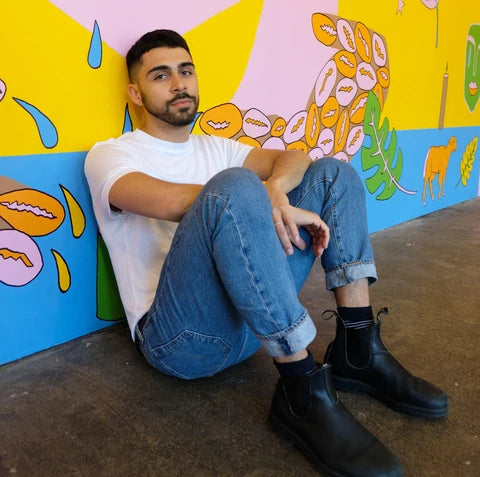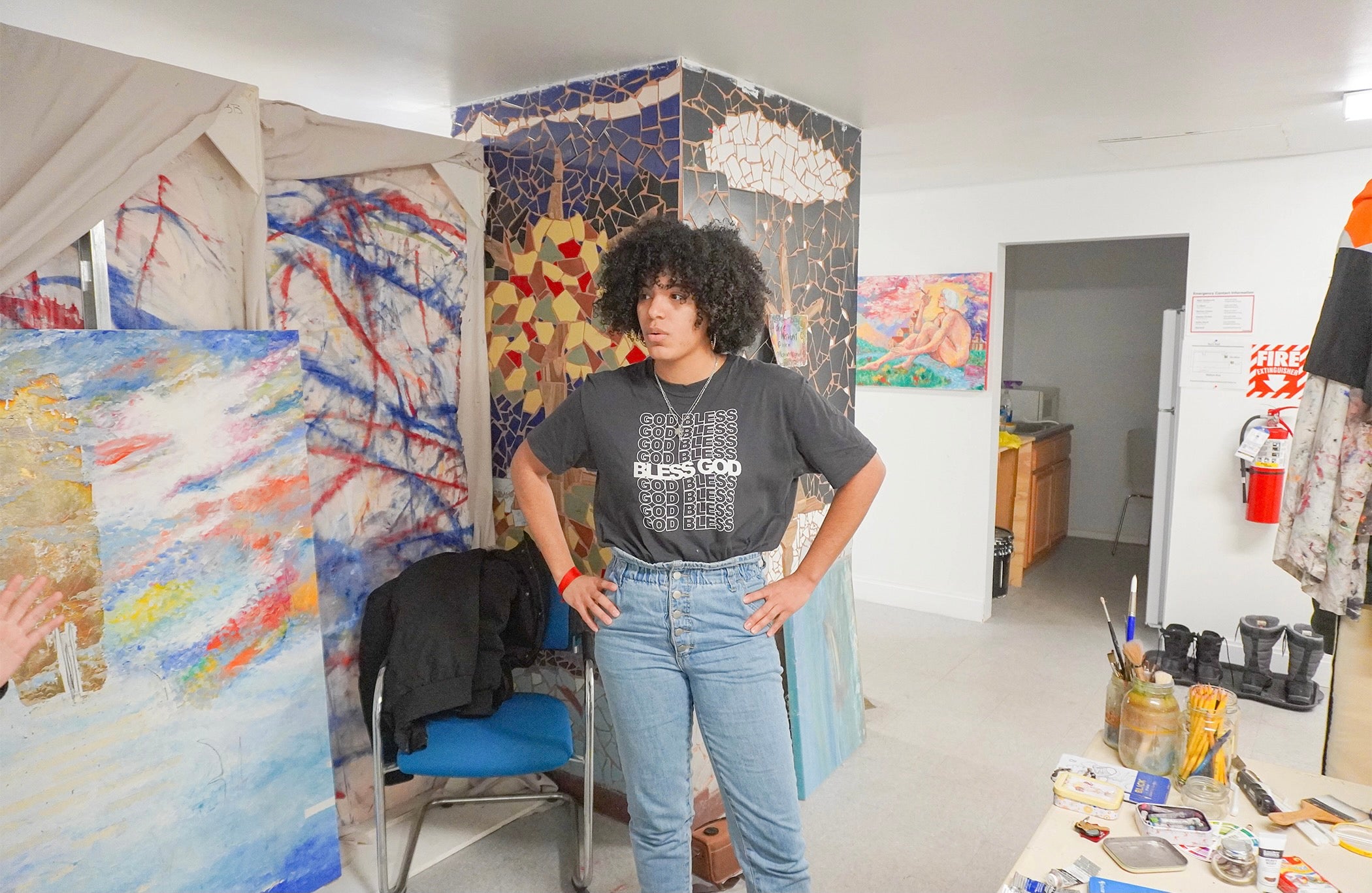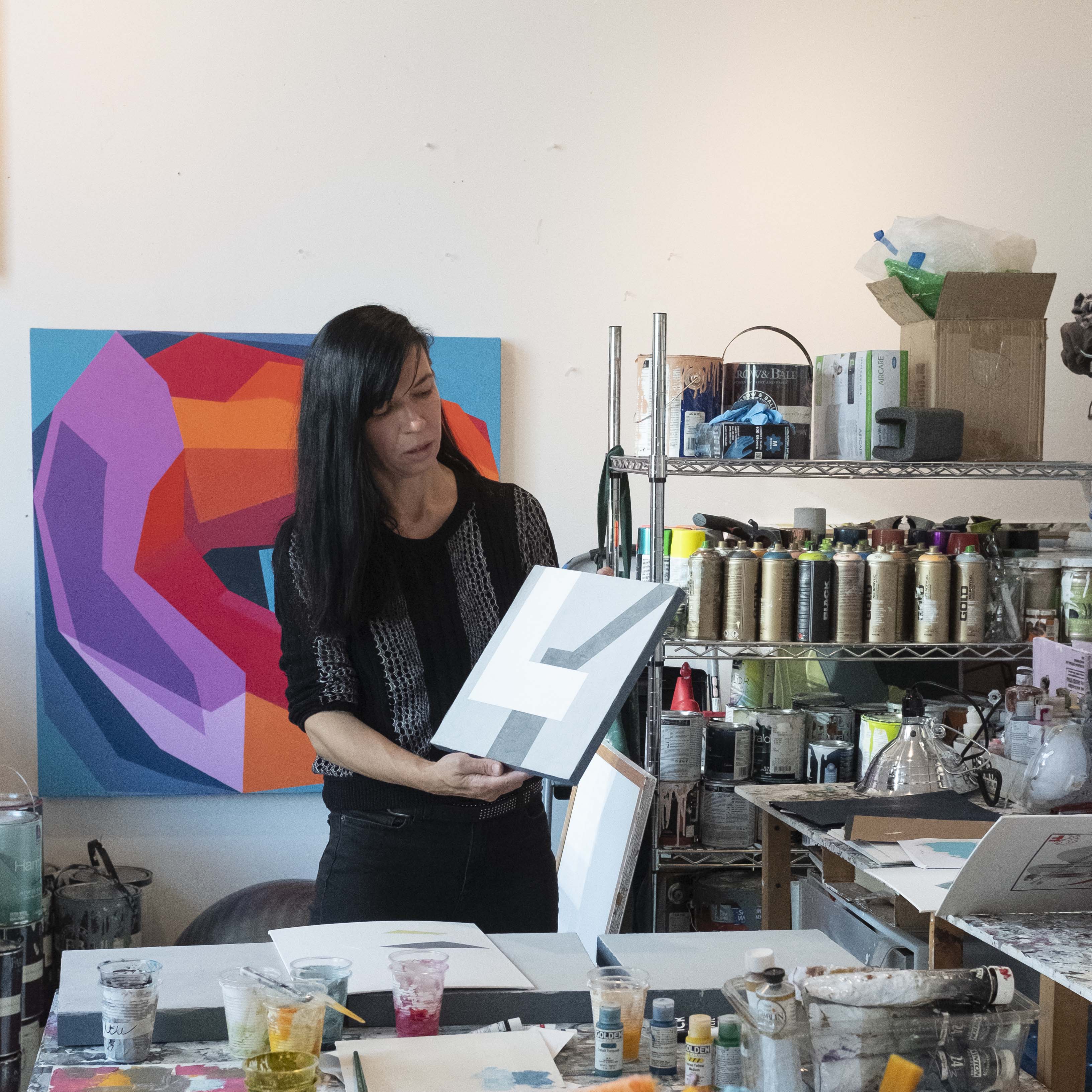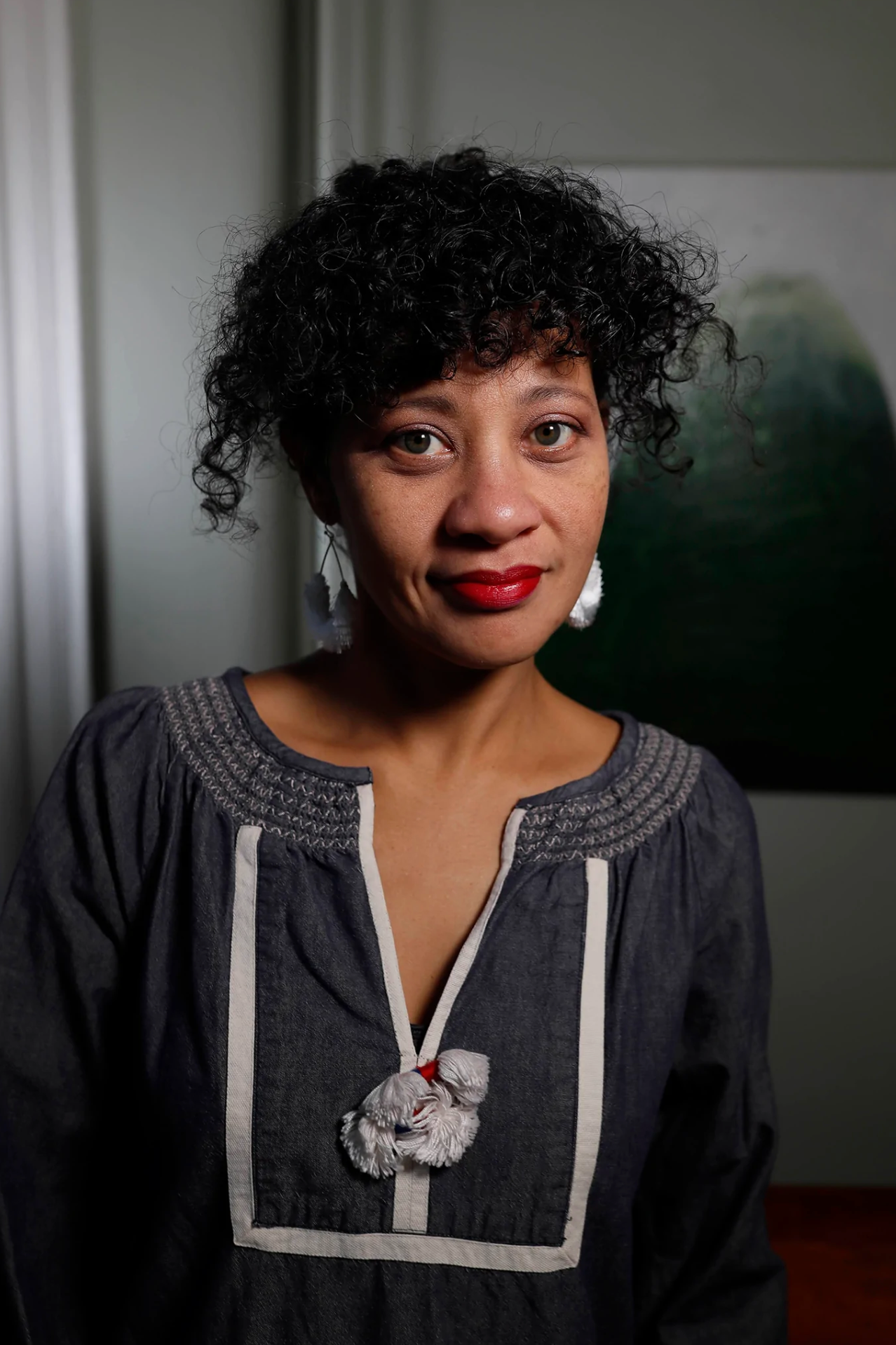No Products in the Cart
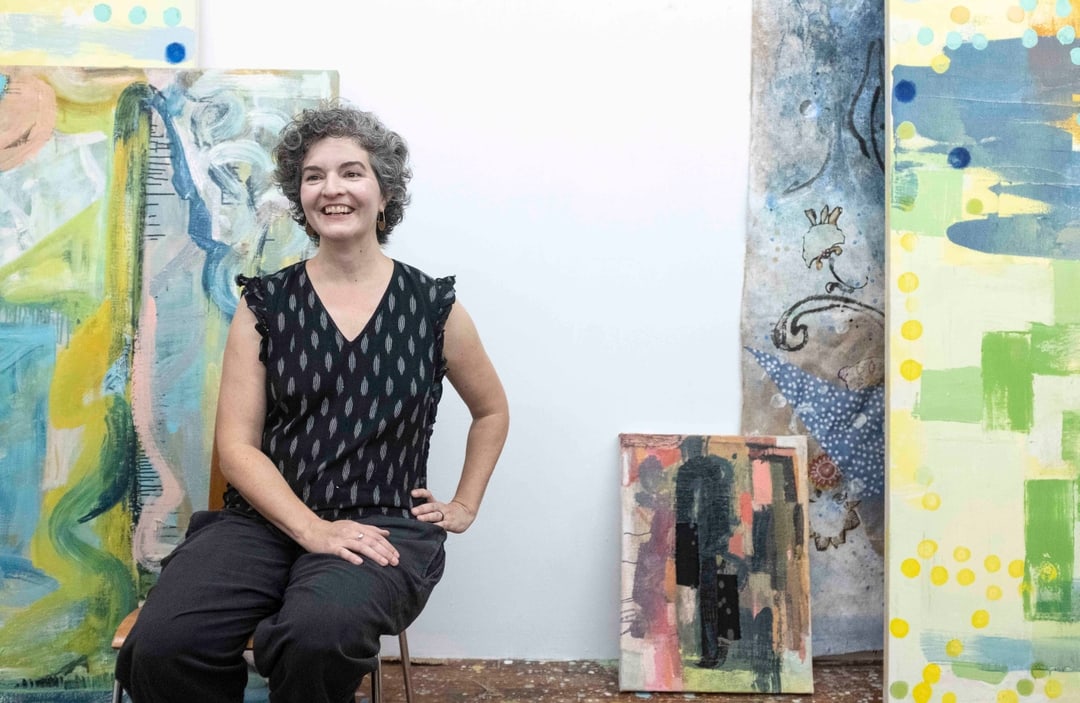
MEET MOLLY: BRINGING OUT THE SECRET LIFE OF COLORS

Dots of turquoise and jonquil flow above strokes of peach-yellow and warm harvest gold on a canvas taller than Molly herself. A street? A river? A window? She sits laughing, floating amid the lightness of her color, supported by “another body” — marks and edges and strokes.

Q1. How has your style of painting evolved? Have you always been an abstract painter?
Living in Europe opened my mind to abstract painting — I was always drawing but prior to that everything was figurative.
I grew up in Washington D.C. but lived in Paris after college. In France, I worked on a farm, picking cherries in an orchard and stayed past the plum season; I also worked for an archeologist, digging and mostly finding nothing. I was drawing all this time — seeing the colors in the orchard, the light changing on the ground where I dug, and whenever I could, I traveled to see art. That experience of being in Europe really changed me.
Q2. What does “abstract art” mean to you? What is your definition of the art you are making?
Rather than using paint to convey a landscape, Abstract art is all about the paint, the material. Oil paint was invented to paint flesh, but as an abstract painter, I engage the paint itself as flesh. I think of the paint — its oiliness, stain, atmospheric and different qualities — as a body itself.
My art is not totally abstract to me — there’s a lot about paint, edges, how paint moves, and mark-making, but there’s often a “seed” at the beginning of a painting, that then grows into something that I couldn’t imagine. And sometimes for the sake of the painting I have to bury the seed.

Q3. Most of your work are so warm and light colored, what’s your relationship to color?
I love color. For twenty years now I have taught color theory. I stumbled into it — I have never studied color theory but my friend encouraged me to teach at Parsons. My use of color has always been personal, intuitive, and I was initially afraid that studying it would wreck me, but it actually only expanded things.

Q4. Even your cool colors are warm...
I don’t know why that is. I think that there’s some mystery to the process of making art, and there has to be.
I don’t often use heavy weighty black. Instead of real black, usually I use a chromatic black — a mixture of dark pigments to approximate black — that is sometimes more purple, so nothing ever gets really heavy.
Q5. Above the colors and strokes you used many dots, can you tell us why that is? Are they representing something?
A dot is the beginning of a line. It is so exciting! One moment it is just a mark, and another moment with another mark it can take on a connotation that changes the space. With another mark, an abstract work can change into a representational work — when you see a rectangle, that is your window frame.
I use dots to say that painting is not real hard realism, it is the feeling, the emotion in the vibration of color.

Q6. When you paint, do you have an audience in mind?
A teacher once said to me, “just paint the good stuff”.
What I took it to mean is that if I’m intensely interested, or passionate, or curious and find pleasure in my painting, then someone else will too. My way of painting — I often begin with an open question and end with a question even further beyond my imagination. I hope that my viewers will continue my work, that they will take my seed into another place.
Written by Sunny Liu



